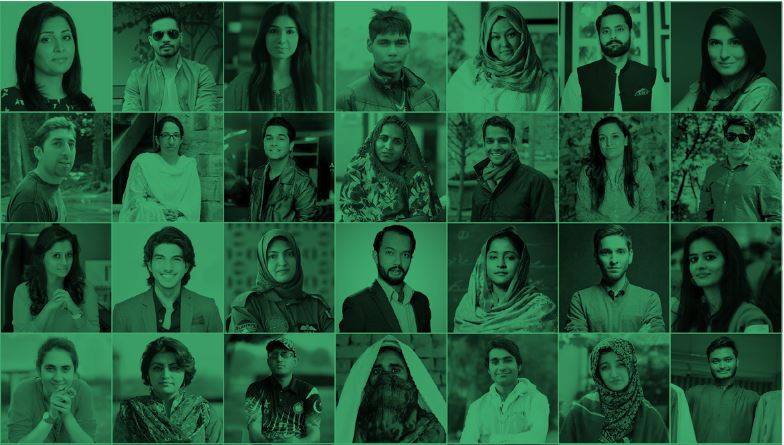
By Ali Warsi
And the Jang group has done it again. Publishing a report on comparison of four provinces from UNDP’s YDI report on exactly the day which Imran Khan had chosen to announce his 100-day programme was a work of art. Did you know that the Youth Development Index (YDI) report that has been making rounds on the internet since morning today was actually released on May 2? They waited 18 days; to do it at the right time. And today it was.
The report has proved damning for the PTI as it highlighted the party’s disastrous performance in KP compared to Punjab's. The report showed that KP performed even worse than South Punjab, about the plight of which PTI has remained quite vocal.
A NayaDaur video from May 5 based on the same UNDP report:
The parts of the report that The News chose to publish showed Punjab leading on all critical development points. Punjab government beat Khyber Pakhtunkhwa’s on immunization, education, school enrollment, living standard, poverty, youth development and even gender parity. The only point where Punjab couldn’t secure the first position was unemployment rate, where it was beaten by Balochistan and Sindh. Even on this front, KP lagged behind.
It wasn't just about the provincial comparisons
However, the YDI report is not just about comparing provincial governments’ performances. It gives us a lot to ponder and the report is not only critical for the KP government but for the entire country. For example, out of the 19 geographical divisions identified by UNDP, only four (Islamabad Capital Territory, Northern Punjab and Eastern Punjab and Azad Jammu & Kashmir) fall within the High Youth Development Index category. The PML-N supporters may rejoice all they want, but the fact remains that most part of Punjab remains only mildly developed, and only slightly better than Central KP, Southern KP, Gilgit-Baltistan and Western Sindh regions.
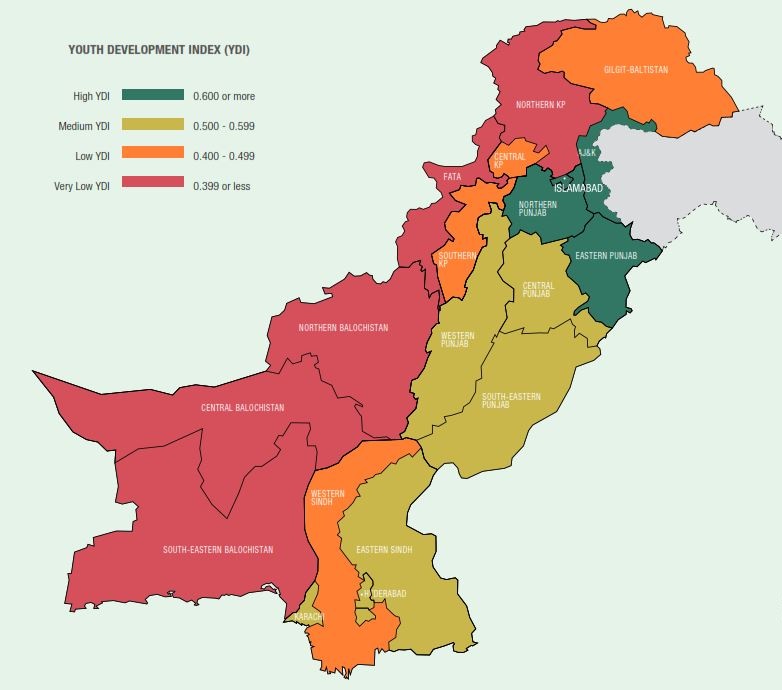
On Human Development Index, although most parts of Punjab fall within the High Medium HDI category, the South and West Punjab districts like Rajanpur, Dera Ghazi Khan and Muzaffargarh remain in the Low Medium HDI category. KP districts have performed almost at par with Punjab here, though the southern part of the province, including the districts of Dera Ismail Khan, Tank and those adjacent to FATA remain extremely low on the human development. FATA, Balochistan and most parts of Sindh fell in the categories between low medium HDI to very low HDI categories, with Quetta being the only district of Balochistan making it to the Medium HDI level.
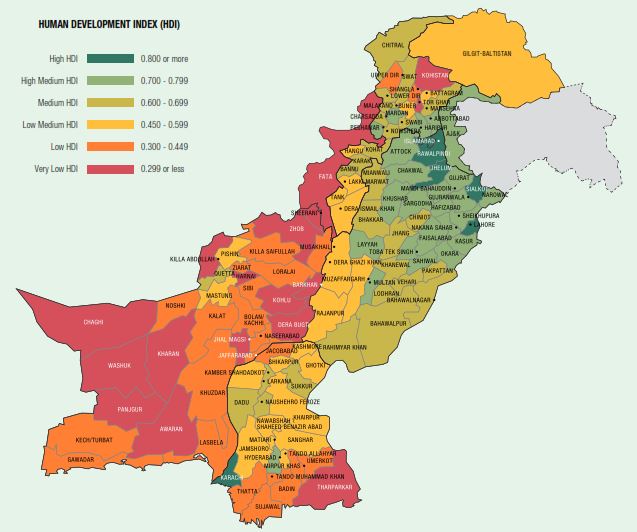
On gender equality, however, Punjab outperformed all the other provinces by a massive margin. In fact apart from Eastern Sindh, Hyderabad and Karachi, there is not a single district in the entire country that could make it to Punjab levels.
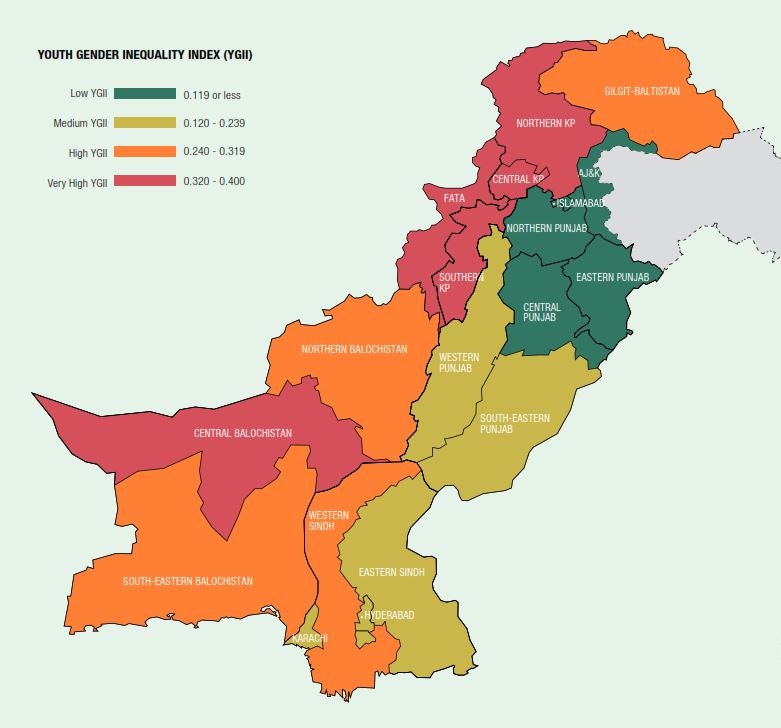
Things to worry about:
There are two graphs in the report that discuss the priorities of our youths and both are intriguing. One is regarding the life priorities of our youth during the next five years. For example, an overwhelming number of the males in Pakistan within the age brackets of 15 to 19 years want to emigrate. This speaks volumes of what they think are their prospects living in Pakistan.
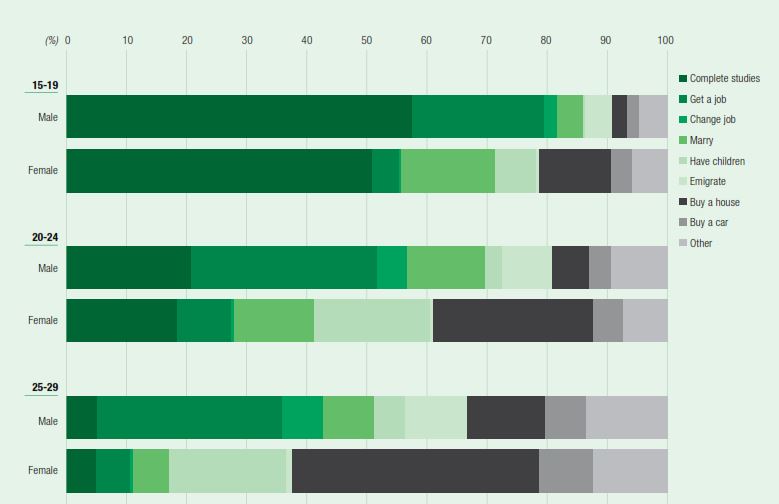
Another graph shows that out of the 10 things identified by the surveyors, protection of political rights is believed to be one of the major demands by least number of people as just over 70% of the respondents highlighted it to be one of the major problems of the country. With the unofficial number of ‘missing persons’ having risen to some 30,000 in the country, only 70% thinking that protection of the political rights is a major concern is a proof of lack of information and ignorance towards political rights. Interestingly, economic growth also found the 8th place out of the 10.
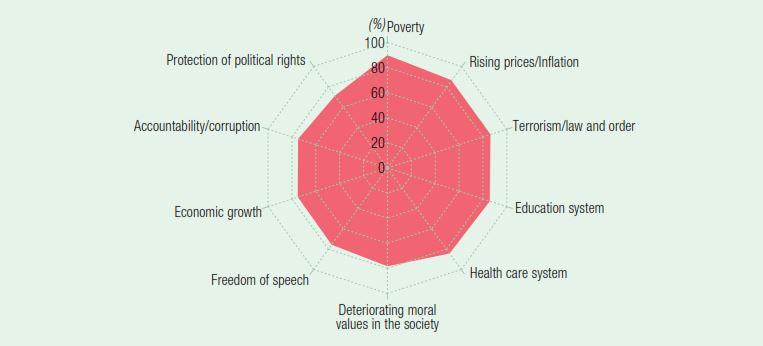
It’s not that poverty, inflation and terrorism are any less damning of the issues, it’s just that they are the offshoots of poor economic growth, and the lack of accountability and protection for political rights.
Interestingly, the identification with religion is highest among the people of Punjab (51.4%) and KP (50%) while it is at the lowest in FATA, GB and AJK, the three regions that have largely remained autonomous since the inception of the country.
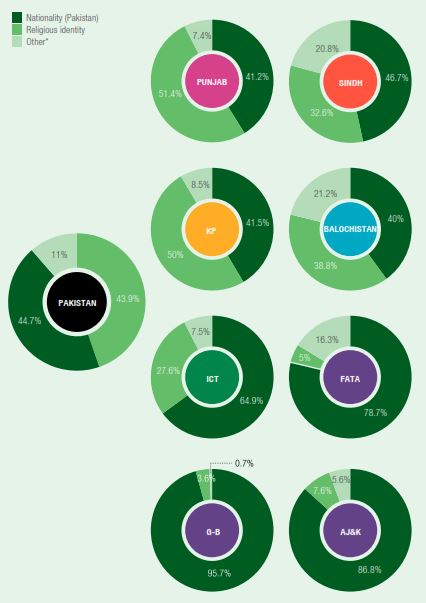
Inaccessibility of the youth to recreational activities
Isn’t it tragic that 97.2% of the youth in the country do not have the access to live music and 97% of them do not have the access to a cinema? Only 5.5% have the access to a library and well over 93% have neither the access to sports facilities nor to the sports events. No wonder most of us want to emigrate.
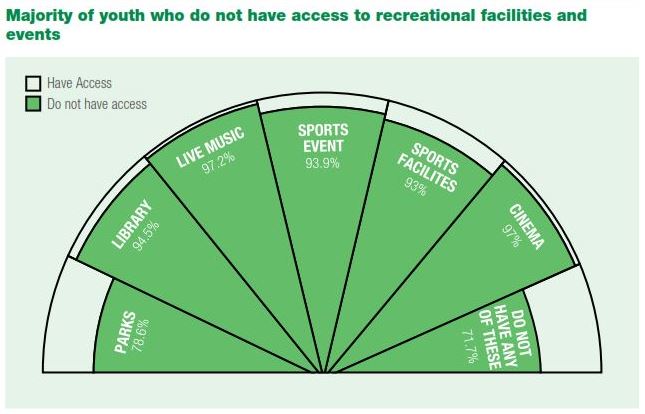
The biggest positive
The voter turnout in the 2013 election was 55.02% but this time it is going to be much better. At least this is what this YDI report claims. According to this graph, there is not even a single region in the country where youth vote would be less than 60% in the coming election. With Islamabad and Gilgit-Baltistan youths most enthusiastic about the coming elections, young guns in Punjab, Sindh, KP, Balochistan, FATA and AJ&K won’t remain too far behind either.
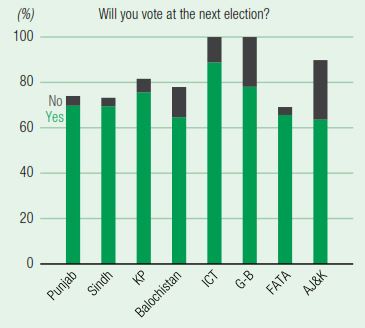
This shows a growing interest of the youth in the national politics and is a big positive that we can take from this report.
And the Jang group has done it again. Publishing a report on comparison of four provinces from UNDP’s YDI report on exactly the day which Imran Khan had chosen to announce his 100-day programme was a work of art. Did you know that the Youth Development Index (YDI) report that has been making rounds on the internet since morning today was actually released on May 2? They waited 18 days; to do it at the right time. And today it was.
The report has proved damning for the PTI as it highlighted the party’s disastrous performance in KP compared to Punjab's. The report showed that KP performed even worse than South Punjab, about the plight of which PTI has remained quite vocal.
A NayaDaur video from May 5 based on the same UNDP report:
The parts of the report that The News chose to publish showed Punjab leading on all critical development points. Punjab government beat Khyber Pakhtunkhwa’s on immunization, education, school enrollment, living standard, poverty, youth development and even gender parity. The only point where Punjab couldn’t secure the first position was unemployment rate, where it was beaten by Balochistan and Sindh. Even on this front, KP lagged behind.
It wasn't just about the provincial comparisons
However, the YDI report is not just about comparing provincial governments’ performances. It gives us a lot to ponder and the report is not only critical for the KP government but for the entire country. For example, out of the 19 geographical divisions identified by UNDP, only four (Islamabad Capital Territory, Northern Punjab and Eastern Punjab and Azad Jammu & Kashmir) fall within the High Youth Development Index category. The PML-N supporters may rejoice all they want, but the fact remains that most part of Punjab remains only mildly developed, and only slightly better than Central KP, Southern KP, Gilgit-Baltistan and Western Sindh regions.

On Human Development Index, although most parts of Punjab fall within the High Medium HDI category, the South and West Punjab districts like Rajanpur, Dera Ghazi Khan and Muzaffargarh remain in the Low Medium HDI category. KP districts have performed almost at par with Punjab here, though the southern part of the province, including the districts of Dera Ismail Khan, Tank and those adjacent to FATA remain extremely low on the human development. FATA, Balochistan and most parts of Sindh fell in the categories between low medium HDI to very low HDI categories, with Quetta being the only district of Balochistan making it to the Medium HDI level.

On gender equality, however, Punjab outperformed all the other provinces by a massive margin. In fact apart from Eastern Sindh, Hyderabad and Karachi, there is not a single district in the entire country that could make it to Punjab levels.

Things to worry about:
There are two graphs in the report that discuss the priorities of our youths and both are intriguing. One is regarding the life priorities of our youth during the next five years. For example, an overwhelming number of the males in Pakistan within the age brackets of 15 to 19 years want to emigrate. This speaks volumes of what they think are their prospects living in Pakistan.

Another graph shows that out of the 10 things identified by the surveyors, protection of political rights is believed to be one of the major demands by least number of people as just over 70% of the respondents highlighted it to be one of the major problems of the country. With the unofficial number of ‘missing persons’ having risen to some 30,000 in the country, only 70% thinking that protection of the political rights is a major concern is a proof of lack of information and ignorance towards political rights. Interestingly, economic growth also found the 8th place out of the 10.

It’s not that poverty, inflation and terrorism are any less damning of the issues, it’s just that they are the offshoots of poor economic growth, and the lack of accountability and protection for political rights.
Interestingly, the identification with religion is highest among the people of Punjab (51.4%) and KP (50%) while it is at the lowest in FATA, GB and AJK, the three regions that have largely remained autonomous since the inception of the country.

Inaccessibility of the youth to recreational activities
Isn’t it tragic that 97.2% of the youth in the country do not have the access to live music and 97% of them do not have the access to a cinema? Only 5.5% have the access to a library and well over 93% have neither the access to sports facilities nor to the sports events. No wonder most of us want to emigrate.

The biggest positive
The voter turnout in the 2013 election was 55.02% but this time it is going to be much better. At least this is what this YDI report claims. According to this graph, there is not even a single region in the country where youth vote would be less than 60% in the coming election. With Islamabad and Gilgit-Baltistan youths most enthusiastic about the coming elections, young guns in Punjab, Sindh, KP, Balochistan, FATA and AJ&K won’t remain too far behind either.

This shows a growing interest of the youth in the national politics and is a big positive that we can take from this report.
